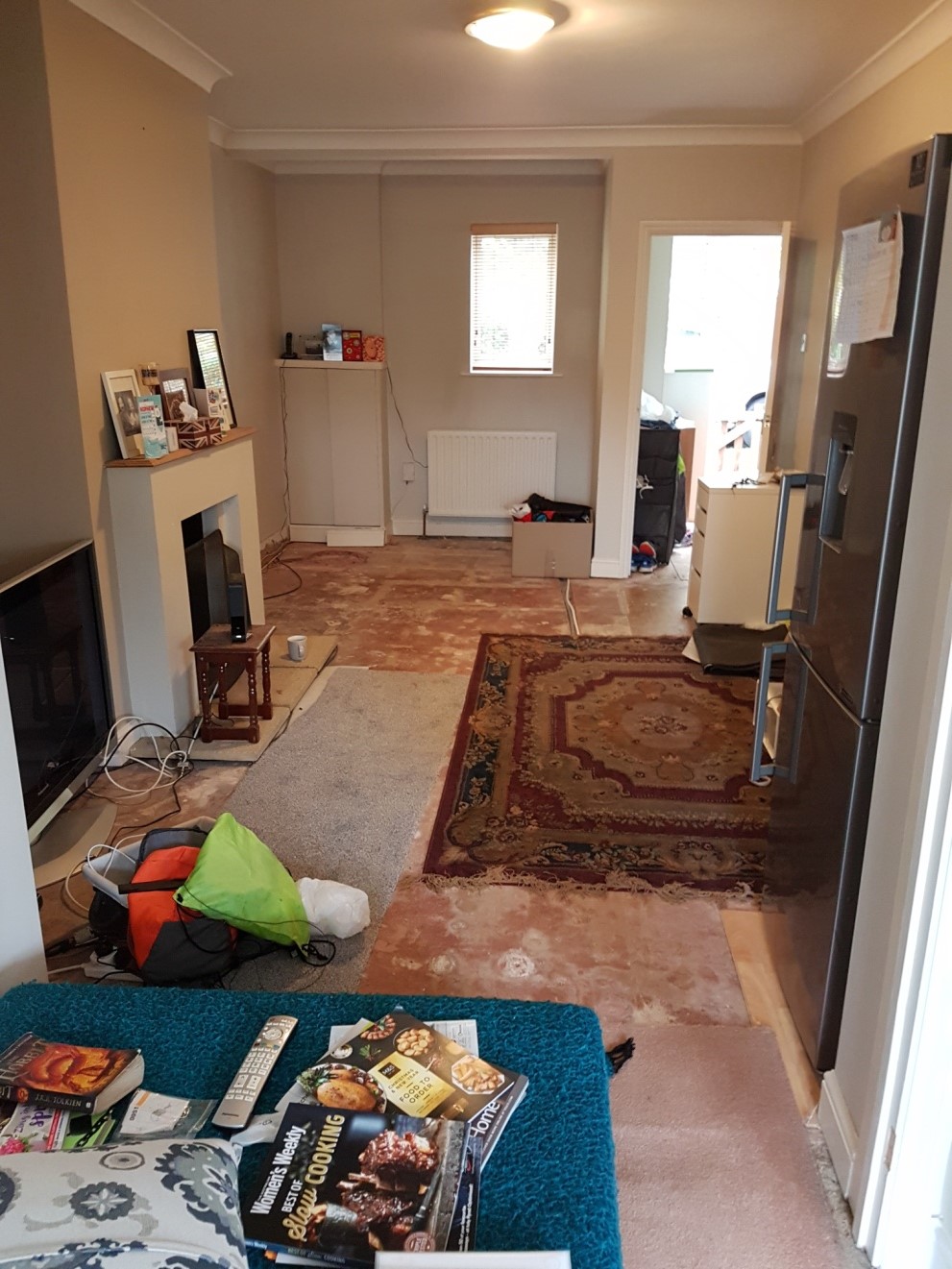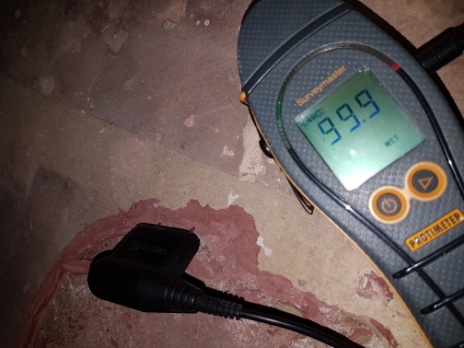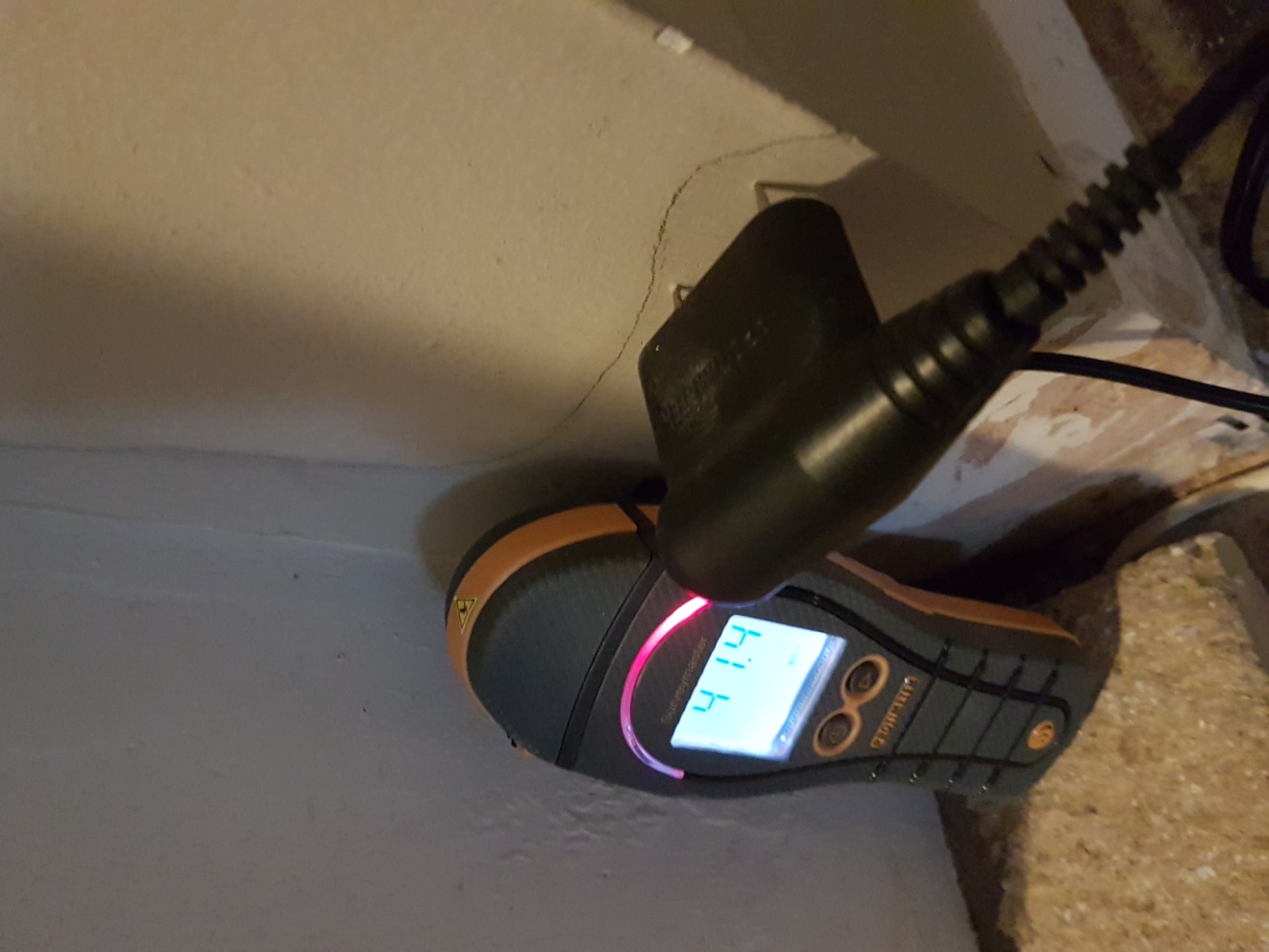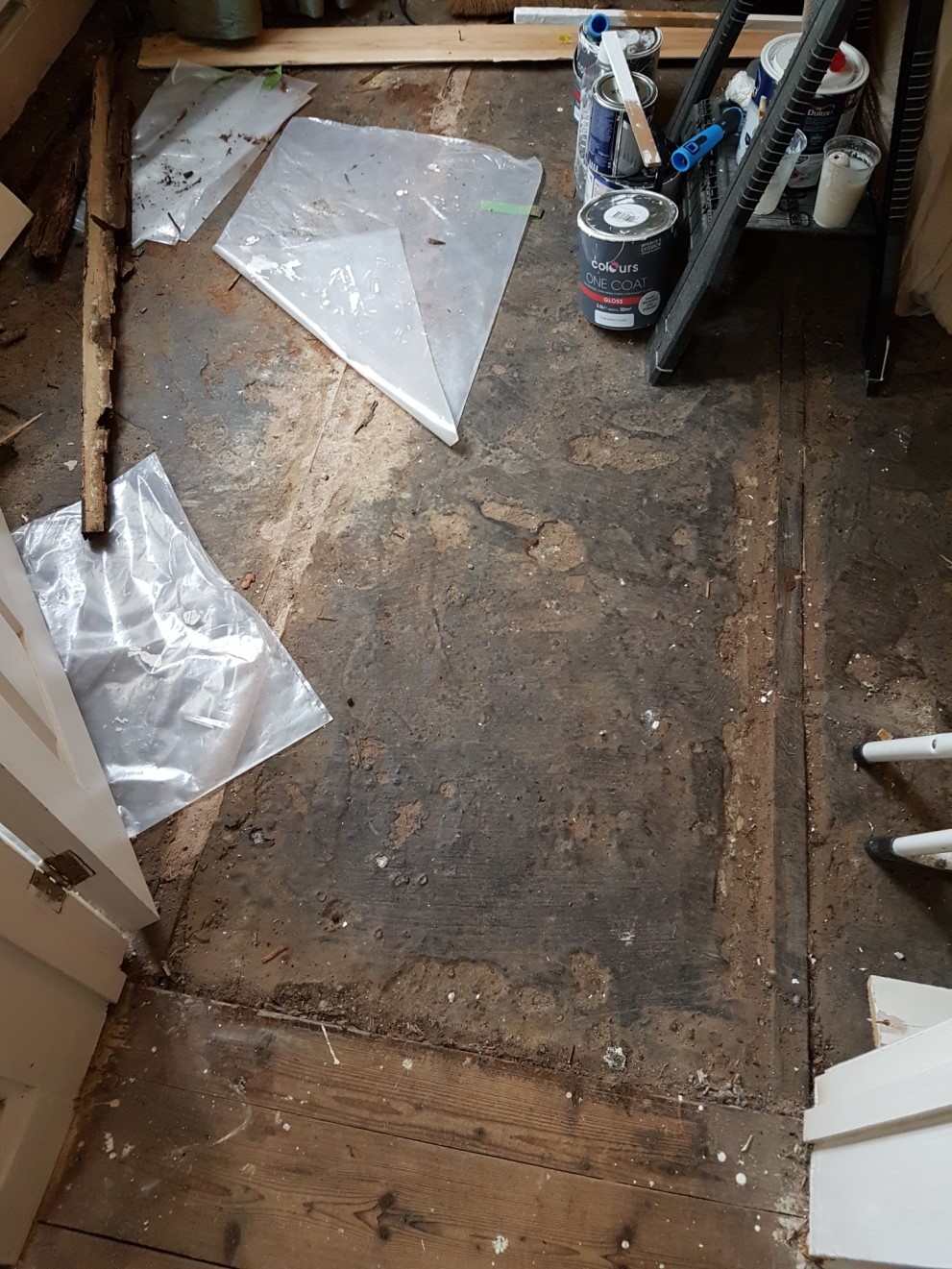The Background: The property was undergoing redecoration six months into new ownership when we received a call to survey for damp. The client had noted a tidemark to lower walls in the right-hand reception room (viewed from the street) and an unusual floor covering that required checking.

The Survey: found the floor was of solid concrete base with 10-12mm red coloured screed. A Protimeter damp meter found high levels of moisture content to the screed which indicated it was likely to be Magnesite, which contains magnesium oxychloride. Some forms of this material contain asbestos.
A sample of the floor was taken for testing to Vintec Laboratories based on the BRE (Buildings Research Establishment) site in Watford. Fortunately, the result was negative in this case - greatly simplifying its removal and disposal.


Magnesite was commonly used in the late 1950s/60s as a floor finish, often in council stock. History proved that after 40+ years it started to break down and become deliquescent i.e. liquify. This often results in dampness to the lower six inches of walls. A stained tide marked often appears due to colourants in the material as seen in the picture on the left.
The Works: The Magnesite and underlying screed were removed from the slab, plus the lower 1.2M and plaster and render removed from the walls on perimeter of the room. A sheeted damp proof membrane was laid to floor and floor/wall joint. The lower wall was injected with a chemical DPC (damp proof course).
Meanwhile, other areas of the ground floor were being prepared for other, non-Magnesite related, floor improvements as requested. The client wanted any disruptive works conducted in one instance, thus allowing home and family life to restore to normal as soon as possible.
The left-hand reception room of this detached double-fronted house was originally of suspended timber floor construction. However, at some stage in its history, the floorboards had been removed and the void filled with clinker and other stone ballast as seen in the picture on the right.
The resultant encasing of timbers had led to the high moisture content in the old joists, which were now beginning to rot.
The timbers and approx 100mm of clinker were removed from the floor and sheeted damp membrane also laid in preparation for reinstatement works.

With two floors ready, we had one final area to tackle, a 2SqM of true timber suspended floor in the entrance hall at the bottom of the stairs. This zone was surrounded by solid floors and the timbers had no airflow, thus at risk of developing wet rot issues going forward. The timber was removed and an 18-inch slab was installed with further sheet membrane to prevent rising damp.
The floors were then screeded to a common level across the whole ground floor in readiness for the client’s own flooring contractor to apply the final finish upon drying.
The walls in the left-hand reception had Sika waterproof render applied to brickwork and plaster skim finish. The flooring contractor was also engaged to glue fit the set aside skirting once sufficient drying had occurred.
The Good News: The Magnesite related dampness was not identified during a home buyer’s survey, this was eventually determined to be negligent and the client received a worthwhile compensation payment that eased the pain.
A varied and well-rounded project that was satisfying to all concerned, another great performance.
Case Studies
-
2022 British Standards for East London Flooded Basement
The weather in London in 2021 was particularly wet, or so it felt in a property in Leyton, East London,…
-
Bespoke Waterproofing for High-End London Shop Unit
When the basement area of a high-end shop in Chelsea was found to be inches deep in water, one too…
-
Standard Damp Proofing – Windsor SL4
The client instructed Garratt’s to conduct a damp survey and offer considerations related to any remedial works as required. The…
Archived Case Study
Recent
-
18 Mar 2024
How to Get Rid of Damp in Bedrooms
While it may seem more logical that kitchens and bathrooms are more prone to damp, it may be surprising for…
-
13 Nov 2023
Benefits of Tanking Your Basement
While basements have been a staple of home construction in multiple countries, they are still a relatively new concept in…
-
13 Nov 2023
Taking Action on Fixing Damp
Damp is a widespread problem in properties across the UK; however, this doesn’t stop the fact that it’s a serious…







